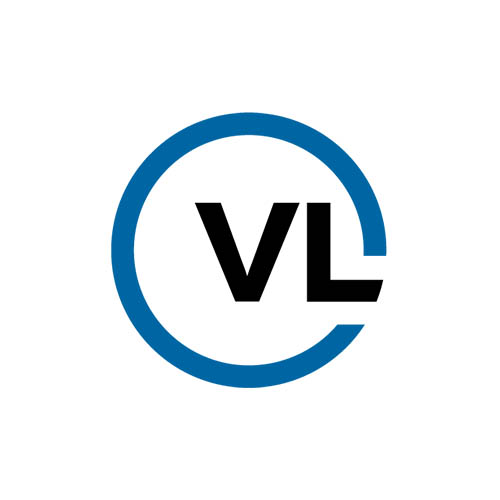Lease accounting: it’s enough to make anyone squirm in their seat. It’s a highly complex – and required – process for private and public companies, as well as government entities.
Trying to navigate these strict requirements can easily become overwhelming. That’s where Visual Lease comes in. As the #1 lease optimization software provider, we help organizations become compliant with FASB, IFRS and GASB lease accounting standards while simultaneously improving the financial, legal and operational performance of their leases.
We chatted with Taralynn VanBrunt, the company’s Manager of Education and Enablement, to learn more about their online training platform, VL University.
Taralynn, tell us about Visual Lease.
Right now, more than one thousand companies rely on Visual Lease to control their lease portfolios, integrate with their existing business systems, and maintain regulatory compliance.
The new lease accounting standards issued under FASB, IFRS, and GASB require significantly more assets and liabilities to appear on the balance sheet. So, way back when, accounting for your leases didn’t have to be as detailed of a process. And then everyone got together and said, “We’re not getting a full picture of your business,” which led to the introduction of the new lease accounting standards.
Now, there’s so much more that needs to be accounted for on the balance sheets. And that’s really where we come in. The standards that I mentioned before specify more than 40 different types of data that have to be tracked to execute the required calculations. Manually keeping track of these data points is extremely overwhelming and can open an organization up to a slew of risks. Our software helps companies streamline and safeguard their lease accounting process.
Visual Lease University was developed to enhance and build upon the five-star training experience that our clients receive during implementation. We have an absolutely stellar implementation team with some folks that have been in similar roles for decades! And we want to be able to support them and support our clients throughout that process.
We also know, especially in this day and age, that people like to digest learning materials in different forms. So, while we have a very detailed product manual, we also have knowledge articles and video content available to our clients in our community.
Absolutely. When you described everything that your software entails and all of those guidelines, I understand why a university would be the next step.
Yes – so, when we think of leases, we usually think of a car lease. Car leases and apartment leases were the only type of leases that I was ever exposed to before I came to Visual Lease. But I soon realized that companies could have hundreds of leases, which is a ton of information to keep track of!
Now, when I look at a lease – and keep in mind, some of them are up to 350 pages long with multiple amendments – it’s almost impossible to understand and remember what’s inside. If you don’t have the right tools in place, proper lease management can take a very long time and become a major headache. And that’s really what we’re helping to address for accountants and their companies and business partners.
Your role at VL University is manager of education and enablement. What does that mean and what does that entail on a daily basis?
The folks on our education and enablement team are extremely effective and well-versed in their roles. I’m just here to support them and then develop a strategy for the team as we grow. The folks on our team have been doing what they do a lot longer than I have been leading them. When I think of true professionals, they check all the boxes, and they’re awesome to work with.
Very cool. So, who takes your courses?
Primarily, we see new users take advantage of the courses in Visual Lease. But, they’ve also been very helpful for longtime users that might need a refresher.
We developed Visual Lease University for our clients. Our company has grown tremendously over the past year. I’m very thankful for that, and we’re really lucky. So, as we’ve onboarded new clients, VL University has been extremely helpful as they get up to speed on the platform.
It sounds like you’ve got two learners: your own team members as a way to onboard, and then you’ve got your clients.
Absolutely – yes, not only do our users benefit, but our internal teammates learn so much about new functionality and features, as well.
So how are the courses laid out?
At present, the courses are anywhere from 13 to 25 minutes long. As we’re producing new courses, we’re incorporating timestamps. So, when the topic changes, we’ve laid out those timestamps in an agenda-like format at the beginning of the course.
With this format, a user can then go right to the timestamp they’re most interested in. So, if you don’t want to watch a full video, you can easily jump right to a timestamp to get what you need.
Nice. What do you hope folks will gain once they’ve completed the courses?
What’s great about Visual Lease overall is that it’s very easy to use. It’s highly customizable. Our goal for our users is that they feel empowered to hit the ground running as soon as they’ve implemented Visual Lease.
Our clients spend a good amount of time with their implementation manager getting their lease data into the platform. At this time, they’re going through, verifying that all the data’s right. After that point, customers want to be able to start using Visual Lease right away – we make that a reality!
And really, our courses provide them with on-demand learning opportunities, so they can go out and find the answers themselves. Granted, we have an amazing support team. They’re ready to help at any point, but we recognize that sometimes, folks prefer to quickly source answers to their questions themselves – and we’ve built a system that allows them to do just that.
Any recommendations for first-time course takers who may have just set up Visual Lease and they’re taking a course?
What we’ve identified in the past is that there are different types of Visual Lease users depending on their role within their organization. Based on this analysis, we’ve identified six different categories of learning materials for a user to select from.
For those in lease administration and lease accounting, it’s crucial to get your information entered into the system correctly because you really need that lease information in there in order to be able to make the most out of the platform, and it needs to be accurate. So, for those folks, I’d recommend starting with the “lease basics” category where we break down the fundamentals of how to enter information into the system in a quick and efficient way.
How can people enroll?
At present, enrollment is not required for any of our courses through VL University. Client users (anybody set up for a particular company) can access VL University directly from their platform.
Separately, anyone can access VL University right from visuallease.com. So, you don’t even have to be using our platform to gain access to our learning materials.
So if someone is not a Visual Lease user, but they want to find out more either about your platform or about creating leases in general, would you recommend they just browse through your courses to see what it’s like?
I would say, “do it.” Because even if you’re not using Visual Lease and try to track your leases manually – which I do not recommend, because again, there’s a lot of risk there – you can still benefit from our materials and see first-hand the value of lease accounting and lease administration software.
So your courses are free; users don’t need to register before beginning. They can just access them from the main website. Can you talk about that decision of why you don’t require users to enter any information in?
Sure, absolutely. Our primary goal with VL University is to get these learning resources out in front of our users. We want to make their work-life easier, right? Especially today when we’re all trying to balance a lot.
On the other hand, we felt like a fee for this need-to-know information didn’t make sense. Especially since that mentality doesn’t align with our customer-first mentality. You wouldn’t charge for a product manual, would you?
VL University is like an elevated product manual. So, why would we charge for that, too? It just didn’t make sense to us. And again, we want to provide our clients with the best product we can, and we want to put them first. So, if we’re not charging for a product manual, we’re not going to charge for courses and knowledge articles either.
What sort of organization would you recommend presenting their courses in this way, the open no-registration way?
I think a client-centric company is going to say, “we want to empower our users to get the maximum value out of our product and our offerings.” At Visual Lease, our product is awesome, but so are all of the folks that contribute to that product. And we want our users to get the most out of that. We want to empower them to have successful days and to make the most out of our platform.
How do you decide what topics to cover? Is it based on user feedback, or questions that come up from your support team?
It’s a little bit of both. The team that I lead – the awesome folks on the Education Enablement team – is responsible for release readiness, knowledge articles, and all supporting documentation for the product manual and everything else.
We represent the Client Services group, so, we looked at the foundational building blocks of lease administration, lease management and then the platform administration. We have all of these different needs working together within the platform, so we wanted to take it down to that foundational level. What are the building blocks? What can we provide to somebody that they can then build on top of?
And then from there, we work with our Client Services partners, as well as our cross-departmental partners to determine new courses. And, of course, client feedback is huge, right? You have to listen to the voice of the customer if you’re going to succeed in any business.
How long does it take to create a course from ideation to launch?
That’s the million-dollar question! It really depends on the topic and which cross-departmental subject matter experts we involve.
When I joined the company, I was just blown away by how much knowledge we have here, and having the ability to tap into that knowledge to create content for our clients is outstanding. So again, it depends on the topic.
Those accounting courses can get very involved, but we have some great folks on staff that can help us with that. If I’m going to ballpark it, I’d say it typically takes about two to three weeks for production. But there are instances where we can move quicker or slower. It’s really based on customer priority.
What do you think your university’s key to success is?
Besides the great team we have here at Visual Lease that make it all happen, the present version of VL University is very easy to access and use. And it provides users with the ability to tap into what they need when they need it. You don’t have to wait for it. It’s right there. Go for it.
Do you have a community surrounding VL University?
Right now, we have a community. But – and this is breaking news – we’re working on a new rendition of our community. We’re also working on a new rendition of VL University. They’re going to go hand-in-hand.
Since our original deployment, we have hired our very first Instructional Designer. We didn’t have one on the team prior. Since joining, our Instructional Designer has been diligently rescripting every single one of our courses that we have right now, which is roughly 30 in total. She’s also scripting other courses to enhance the learners’ experience.
In late 2022, we envision integrating a learning management system into our community, elevating the delivery of VL University to include more in-platform trainings and incorporate microlearning opportunities, as well.
To prepare for the integration of an LMS, our Instructional Designer is rescripting our existing content. In the meantime, we’ve already rolled the LMS internally out internally, and it’s been helpful in facilitating learning and professional development opportunities.
So when you say rescripting, does that mean rewriting?
When we initially prepared our scripts – before we had the power of an instructional designer – we were going with what we thought was the best way to present the content to our users. And with the help of our Instructional Designer, we have recognized that there are better ways to cut, edit and produce video.
So, a lot of the scripts that we have were intended for that traditional, 15 –20-minute-long video. Now that we’re consolidating things, we’re taking those long scripts and chopping them up to create shorter, “bite-sized” learning opportunities.
My last question for you is what advice do you have for an organization or a person hoping to launch their own academy or university?
You might already be able to tell by the way I’ve spoken about our instructional designer, but if you can hire an instructional designer or bring in a consultant, you’ll gain important perspective.
We’ve learned so much already, and having somebody on the team that knows how to present information so it can be learned and retained and used is key to being able to truly help our users.
That is great advice. You get that outside perspective that something might make sense to you, but other people may understand it differently.
Absolutely. I think the real key is that everyone learns differently, right? We all do, and we have to embrace that, especially now.



